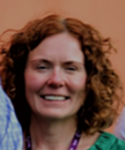
Behaviour and Pastoral Manager
Designated Safeguarding Lead
peter.ford@telfordcollege.ac.uk
01952 642511

Headteacher
Deputy Designated Safeguarding Lead
emma.rennie-gibbons@telfordcollege.ac.uk
01952 642 541

Family Liaison Officer
Deputy Designated Safeguarding Lead / CSE Lead
tammy.gilsenan@telfordcollege.ac.uk
01952 642402

Mr Roberts
Executive Principal for School Improvement
Trust Safeguarding Lead
paul.roberts@lct.education

Chair of Governors
Governor for Safeguarding
gail.bleasby@telfordcollege.ac.uk
There are four categories of abuse: Emotional abuse, Physical abuse, Sexual abuse and Neglect
Signs may include; burns or scalds, broken or fractured bones, bruises, bite marks, scarring, the effects of poisoning, such as vomiting, drowsiness or seizures, breathing problems from drowning, suffocation or poisoning, defensive wounds, head injuries in babies and toddlers, bruising in non-mobile babies, any serious injury with no explanation or conflicting explanations and ligature marks.
Behaviours may include; fear of specific individuals, depression or withdrawn behaviour, unnaturally compliant to parents, aggression towards others, refusal to discuss injuries or scared of medical help, reluctance to change if front of others or wearing ‘cover-up’ clothing, any behaviours that you would not expect to see in a child, at their age or stage in development, withdrawal from physical contact and flinching when approached or touched.
A form of abuse which may involve hitting, shaking, throwing, poisoning, burning or scalding, drowning, suffocating or otherwise causing physical harm to a child, Physical harm may also be caused when a parent or carer fabricates the symptoms of, or deliberately induces illness in a child (FII)
Children and young people do injure themselves accidently and there are common sites for these injuries. There are also common sites for non-accidental injuries.
Common sites for accidental injuries: nose, forehead, chin, forearm, elbows, bony spine, hips and knees.
Common sites for non-accidental injuries: eyes, ears, mouth, skull, neck, cheek, side of face, genitals, upper arm, inner arm, chest, shoulders, back, buttocks, thighs and side/back of knees.
Broadly speaking there are four types of neglect: physical, educational, emotional and medical.
Signs may include; being smelly or dirty, being hungry or not given money for food, having unwashed clothes, having the wrong clothing, such as no warm clothes in winter, having frequent and untreated nappy rash in infants, living in an unsuitable home environment, such as having no heating, being left alone for a long time, taking on the role of carer for other family members, anaemia, body issues, such as poor muscle tone or prominent joints, medical or dental issues, missed medical appointments, such as for vaccinations, not given the correct medicines, poor language or social skills, regular illness or infections, repeated accidental injuries, often caused by lack of supervision, skin issues, such as sores, rashes, flea bites, scabies or ringworm, thin or swollen tummy, tiredness, untreated injuries and weight or growth issues.
Behaviours may include; becoming clingy, becoming aggressive, being withdrawn, depressed or anxious, changes in eating habits, displaying obsessive behaviour, finding it hard to concentrate or take part in activities, missing school, showing signs of self-harm and using drugs or alcohol.
It’s never a child’s fault they were sexually abused – it’s important to make sure children know this.
There are 2 types of sexual abuse – contact and non-contact abuse. Sexual abuse can happen in person or online.
Signs & behaviours may include; pregnancy avoiding being alone with or frightened of people or a person they know, language or sexual behaviour you wouldn’t expect them to know, having nightmares or bed-wetting,
alcohol or drug misuse, self-harm, changes in eating habits or developing an eating problem, changes in their mood, feeling irritable and angry, or anything out of the ordinary, bruises, bleeding, discharge, pains or soreness in their genital or anal area, sexually transmitted infections spend a lot more or a lot less time than usual online, texting, gaming or using social media, seem distant, upset or angry after using the internet or texting, be secretive about who they’re talking to and what they’re doing online or on their mobile phone
Emotional abuse is often a part of other kinds of abuse, which means it can be difficult to spot the signs or tell the difference, though it can also happen on its own.
Signs may include; humiliating or constantly criticising a child, threatening, shouting at a child or calling them names, making the child the subject of jokes, or using sarcasm to hurt a child, blaming and scapegoating, making a child perform degrading acts, not recognising a child’s own individuality or trying to control their lives, pushing a child too hard or not recognising their limitations, exposing a child to upsetting events or situations, like domestic abuse, abusing animals or drug taking, failing to promote a child’s social development, not allowing them to have friends, persistently ignoring them, being absent, manipulating a child, never saying anything kind, expressing positive feelings or congratulating a child on successes and never showing any emotions in interactions with a child, also known as emotional neglect.
Behaviours in babies and pre-school children might include; be overly-affectionate to strangers or people they don’t know well, seem unconfident, wary or anxious, not have a close relationship or bond with their parent and be aggressive or cruel towards other children or animals.
Behaviours in older children might include; use language you wouldn’t expect them to know for their age, act in a way or know about things you wouldn’t expect them to know for their age, struggle to control their emotions, have extreme outbursts, seem isolated from their parents, lack social skills and have few or no friends.
These include but limited to:
o Female genital mutilation (FGM); is when a female’s genitals are deliberately altered or removed for non-medical reasons.
o Forced Marriage; is one entered into without the full and free consent of one or both parties, involving violence, threats and coercion.